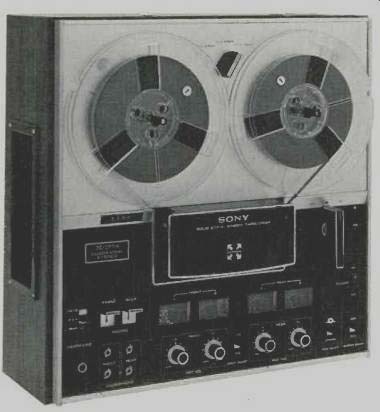
MANUFACTURER'S SPECIFICATIONS
Tape Speeds: 7 1/2, 3 3/4, and 1 7/8 ips.
Controls: Four-channel/ two-channel switch; tape direction, rewind, pause, and brake; four independent record level controls; headphone channel switch; bias and equalization switch; line-mic input switch, and front-rear record switch.
Inputs: Four mics, four line or auxiliary.
Features: Automatic shut-off, sound-with-sound, vertical and horizontal operation, automatic tape lifters, and record interlock.
Frequency Response (Sony SLH-180 tape): 50 to 18,000 Hz ±3 dB at 7 1/2 ips.
Dimensions: 15 3/4 in. W by 7 3/4 in. H by 15 1/2 in. D.
Weight: 23 lbs., 2 oz.
Price: $339.95.
Quadraphonic tape recorders are not particularly cheap, partly because of the precision nature of the heads involved and partly because of the relatively low production--or so I would suppose. One exception is the new Sony-Superscope TC-277-4 which costs only $339.95, and it offers a very impressive specification at that. I have had one of these machines in use for more than three months now and can attest to its ease of operation and high performance standards--which, incidentally, would be considered good in a recorder costing almost twice as much. Naturally. it does not have all the refinements of the big Quadradial 854-4S, for example (SyncroTrak, 15 ips, variable speed control, etc.), but it does have separate meters for each channel, three speeds, provision for headphone monitoring of front and / or rear channels, and, most I important these days, switchable equalization for high efficiency tapes. Front or rear channels can be recorded separately--in other words, you can use the machine as a two-track recorder or for mono if you wish. Figure 1 shows the view underneath; the circuit board can be seen at the top right and the power transformer on the left. The input panel is located on the side and it can be seen in Fig. 2. Microphone input sockets-four of them-are located on the front panel just under the RECORD switches. Control functions can be seen from the photograph at the beginning of the review-the large knob on the right is the tape direction and rewind control. Fig. 3 shows the heads and capstan assembly.
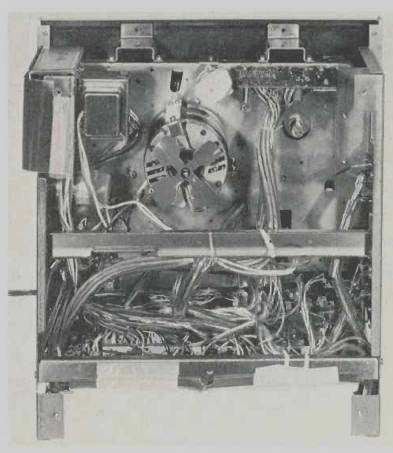
Fig. 1--View from beneath.
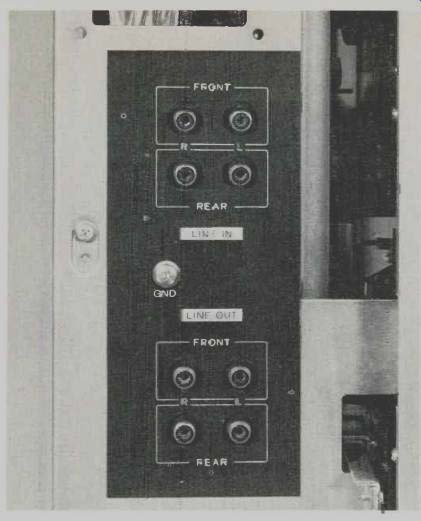
Fig. 2--Input panel.
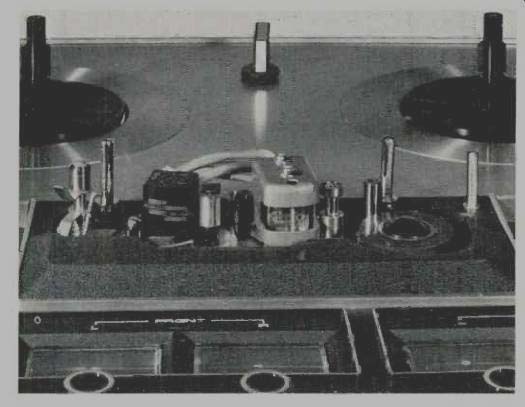
Fig. 3--Heads and capstan assembly.
Circuit Description
Figure 4 shows a block diagram of the basic circuit of one channel. The first stage uses a bootstrap arrangement to get a high impedance input (R1, 2 and 3) in Fig. 5. The inductance Li is a bias trap. Four more transistors are used in the combined audio playback and record stages plus another for the meter. The erase oscillator uses two transistors in a push-pull circuit, and two more are employed in the stabilized power supply, making a grand total of 29, plus 11 diodes.
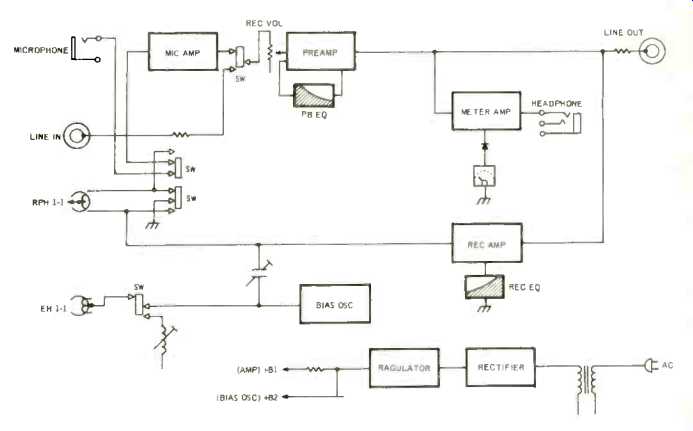
Fig. 4--Block diagram of the basic circuit, one channel.
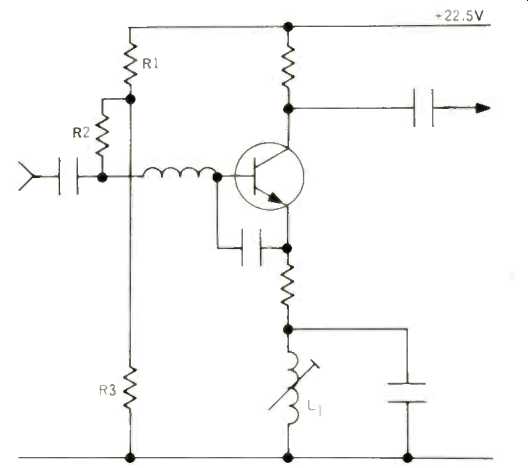
Fig. 5--Input stage.
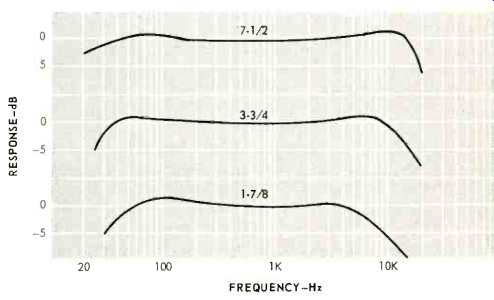
Fig. 6--Record-playback response at three speeds.
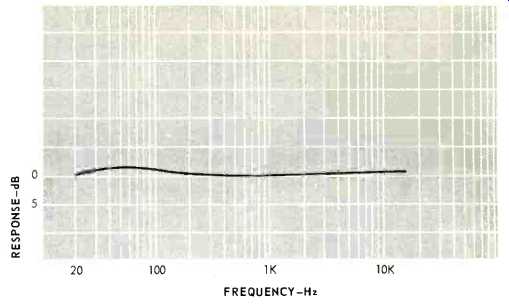
Fig. 7--Playback from standard tape at 7 1/2 ips.
Measurements
Frequency response at the three speeds (record-replay) is shown in Fig. 6. The tape used was Sony SLH-180 as recommended. Figure 7 shows the response at 7 1/2 ips using standard Ampex test tape. Signal/noise was-62 dB at 712 ips,-58 dB at 3 3/4 ips, falling to -54 dB at 1 7/8 ips, all measured at +3 dB level. Distortion was 0.58 per cent THD for 0 dB, increasing to 0.75 percent at +3 dB (at 7 1/2 ips), and crosstalk at l kHz was -58 dB, increasing to -52 dB at 10 kHz. Sensitivity at the tape input sockets was 42 mV for +3 dB recording level. Line output was 0.775 volts at 0 dB.
Wow and flutter measured 0.13 per cent at 7 1/2 ips, 0.16 percent at 3 3/4 ips, and 0.25 per cent at 1%s ips. Tape rewind speed clocked at 3 min., 10 sec. for an 1800-ft. reel.
During the tests, several ordinary tapes were checked with the bias control set to "normal" and although results were good, there was no doubt of the superiority of such high density tapes as the BASF LP 65, Maxell HD 35, TDK 150 SD, and the Sony SLH-180. The saturation point of high frequencies is much higher, and there is an improvement in signal/noise of some 3 dB and the upper range is extended.
Mechanically, the TC-277-4 was quiet and well-behaved. I was particularly impressed with the tape direction control. The reels could be stopped without any fuss or overspill. Not only that, but the control was gentle enough to avoid the possibility of breaking tapes yet it was absolutely positive. Full marks to Superscope engineers. Electrically, the figures speak for themselves. It is sufficient to say that you would have to spend a great deal more money to get a significant improvement-especially at 7' ips. It is true that there are not a great number of quadraphonic tapes available at the present time, but this situation should change quite soon. Home recording in four-channel will give a great deal of scope for the enthusiast-especially if he is interested in electronic music or drama.
-T.A.
(adapted from Audio magazine, Aug. 1972)
Compare to:
Sony TC-755 Tape Deck (Equip. Profile, Sept. 1975)
Sony 880-2 Open Reel Tape Deck (Sept. 1976)
Pioneer tape decks (Aug. 1975)
Also see:
Superscope R-350 AM /FM Stereo Receiver (Feb. 1974)
Sony tape decks (advertisement, Aug. 1975)
Sony STR-V7 stereo receiver (ad, Feb. 1979)
= = = =